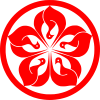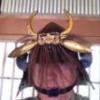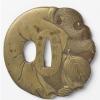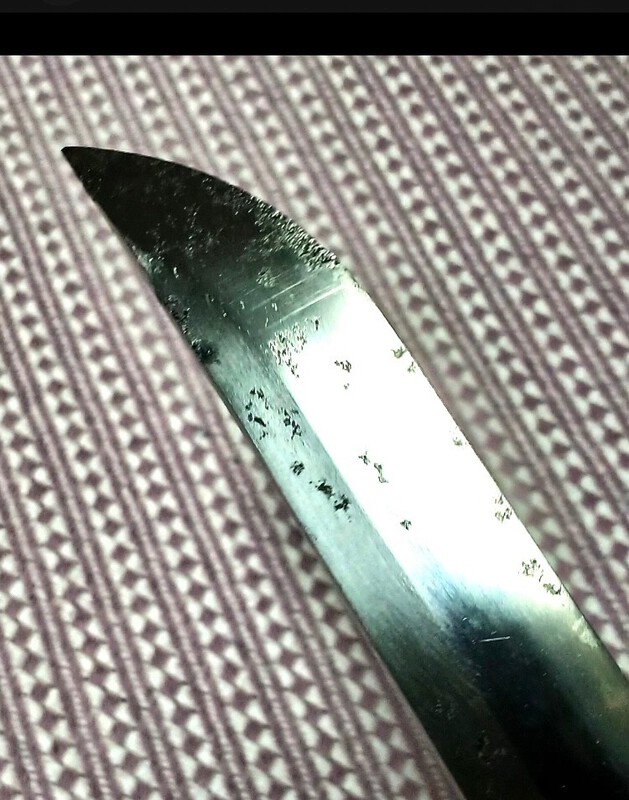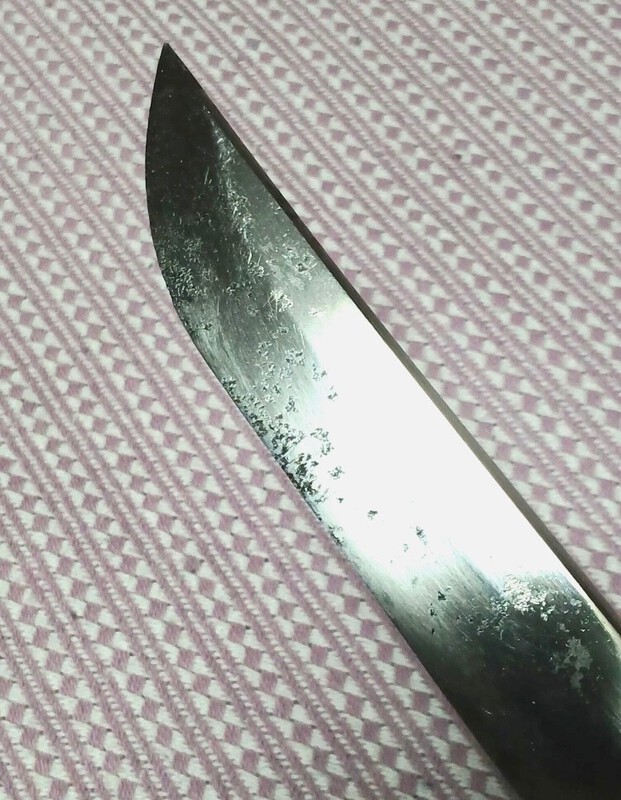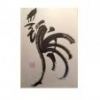All Activity
- Past hour
-
I see what you mean Markus... I will keep searching Regards Luca
-
A branch of Umetada still using the old kanji 埋 for Ume? (Not clear about this in my own mind.)
- Today
-
-
Hi Steve, good looking Tsuba. I think the guys have this under control, but just wanted to say hi from another Steve K.... There used to be another Steve K (aka Tetsugendo) about 6 years ago. Not sure what happened to him, but he was very helpful for me when I first joined.
-
Just found the forum where it came form thanks. Also got a few more pictures of the sword. Do the mountings look original? And also there was some pitting near the kissaki but my guess was that it was there from use during the war possibly from stabbing or cutting something and it seems to be older black pitted rust and only on the kissaki area.
-
The pic for # 9 has the reference for NMB with the date and who posted. Do a search.
-
Late Edo period 行年七十一才 – 71 years old 埋忠家寿 – Umatada Ietoshi
-
Thank you, this is really great information. After viewing note #9 I can’t help but notice that it is also the same pictures of the nakago from the sword I purchased. Do you remember where on nihonto message board you saw this or how you were able to come across those photos of it?
-
Thanks very much! I appreciate the translation. I do hope someone can provide information regarding when it was made. Best regards, Steve K
-
72 plate heavy Kabuto Edo period Thought to be Ichiguchi Myochin work Not sure if signed Would be interested in comments , the Tehen is a bit further back than normal and there is a noticeable bulge at the front. It's an usual number of plates. A period Mai Date. Many thanks to Nick Ricupero for selling this to me.
-
- 7
-

-

-

-
Very true, and while I definitely appreciate the art swords, its true I don't quite have the experience yet to really appreciate the finer points. However I still find it rather dumb to call budget swords "preschool level" or "inferior". One must remember that the blades that we are fortunate enough to to call budget today very well could've been relied on in the past to protect someone's life, or could've cost a lower ranked samurai months of saving. Of course there are kizu ridden messes out there which are flat out garbage, whether it be due to amateur restoration work or poor forging. Basically the point I was trying to make is that there are plenty great interesting pieces out there for cheap, while there is also vastly more cheap garbage out there lol. All depends on what a buyer is looking for and what interests they have. I currently very much enjoy koshirae just as much as the blade itself and the history of the blade, but I would agree that a lot of the swords at the lower price range are not too great for study from an artistic or metallurgical standpoint.
-
These may be some life lessons. 水ハ苦クシテ求メヨ – Make the water bitter and drink it. 人ト人間ノ差 – The difference between a man and a human The first part of this sentence is unclear. 波…ハ世ノ 常デ……………… 任セテ雑魚ハ 歌ヒ雑魚ハ オドル サレド 誰ガ知ロウ 百尺下ノ 水ノ心ヲ 水ノ深サヲ However, I know that this sentence is the last part of a novel “Miyamoto Musashi” written by Yoshikawa Eiji. The whole sentence must be like this. 波騒は世の常である 波に任せて泳ぎ上手に 雑魚は歌い 雑魚は踊る けれど誰が知ろう 百尺下の水の心を水の深さを - Waves and noises are the norm in the world. Let the waves go, swim well, the small fish sing, and the small fish dance. But who knows the heart and the depth of the water a hundred feet below.
- Yesterday
-
@CNS_44 Chansen you could look at this NMB Download (note #9):
-
Got us all thinking - great to see!
-

Chiyo-Ni's Calligraphy of her Haiku "Autumn Moon"
Iaido dude replied to Iaido dude's topic in Other Japanese Arts
Fukuda Chiyo shows up repeatedly in references without a clear attribution. In Patricia Donegan's "The Poetry of Chiyo-Ni," she writes that there is no evidence that Chiyo-ni ever married. In Wiki, there is the statement: "In around 1720 she married a servant of the Fukuoka family of Kanazawa, and had one child with him, a son, who died in infancy. Her husband died of disease not long after in 1722. She valued her independence too much, and despite her loneliness, she did not remarry, so she returned home to her parents." Her family name was Fukumasuya. -
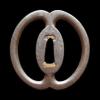
translation help needed for this originally (?) made blade
Nobody replied to kleber75's topic in Translation Assistance
Maybe 則光 - Norimitsu -
Chiyo-Ni's Calligraphy of her Haiku "Autumn Moon"
Charlie C replied to Iaido dude's topic in Other Japanese Arts
Yes, the character in the poem is 留主 and 留守 is a more frequently used version of the same word which automatically jumped out when I typed. -

Chiyo-Ni's Calligraphy of her Haiku "Autumn Moon"
SteveM replied to Iaido dude's topic in Other Japanese Arts
@Iaido dude I saw this one from Tesshu on your other thread, and I'm sorry to say it completely defeated me. I wish I were a kuzushi-ji expert, but I'm just a beginner: a toddler just dangling my feet in the wading pool. Tough to find a kuzushi-ji mentor here in the states. -

translation help needed for this originally (?) made blade
Rawa replied to kleber75's topic in Translation Assistance
Some bizen smith? I would go for muromachi. Sukmitsu also is known fr making almost straight swords. Look in link. https://nihonto.com/a-brief-study-of-bizen-blades-of-the-muromachi-era/ 2 character mei for batch sword? -

Chiyo-Ni's Calligraphy of her Haiku "Autumn Moon"
SteveM replied to Iaido dude's topic in Other Japanese Arts
@Charlie CI'm reasonably sure this one is 留主. -
38 here. I have been collecting antique swords for 20 years, seriously started on Nihonto about 5 years ago.
-

Chiyo-Ni's Calligraphy of her Haiku "Autumn Moon"
Iaido dude replied to Iaido dude's topic in Other Japanese Arts
Thanks, gentlemen. I am again grateful to those members of NMB who are expert in kuzushi-ji for their invaluable input. I had a hard time with the translation that follows 名月や, which is a kigo she uses for a series of haiku that reference the season of autumn. I could not find a single calligraphy example of hers for this haiku as a reference. I asked the poet Michael Burch who has published "loose translations" of haiku to help with the translation, but he is not formally trained in Japanese, and he felt that the calligraphy of the version I posted was the right one. Clearly not. I have never felt entirely comfortable with that choice because it doesn't make sense (e.g. ittemo is not repeated). Here's a more challenging calligraphy that I posted previously of Yamaoka Tesshu that appears to be about a vine that is associated with gourds (hyotan). He frequently intermixes hiragana with kanji. The inscription on the box is also shown. This is a most unusual subject matter for Yamaoka, so there is no example of the translation that I can find. -
@Davo respectable starter sword

